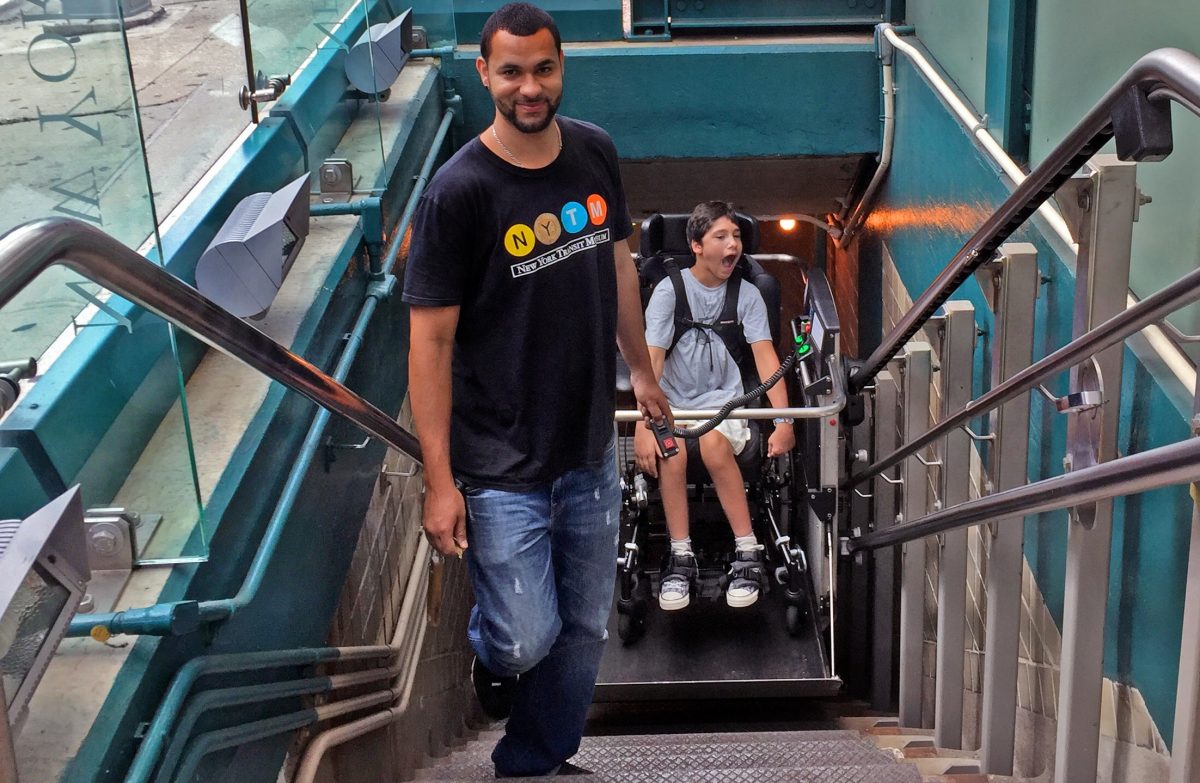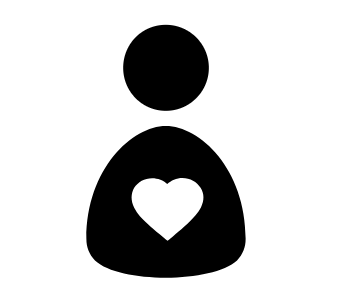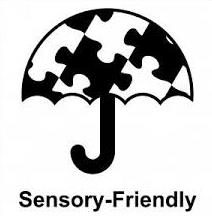Accessibility

The New York Transit Museum is dedicated to providing a warm and welcoming environment to all visitors. Both the Transit Museum in Downtown Brooklyn and the Transit Museum Gallery Annex & Store at Grand Central Terminal are wheelchair accessible.
Transit Museum Downtown Brooklyn
The Transit Museum in Downtown Brooklyn offers adult visitors with disabilities $5 admission. (Excludes groups of 5 or more – click here to make a Group Reservation.)

The Transit Museum’s wheelchair accessible entrance is located on the corner of Schermerhorn and Court Streets, in Downtown Brooklyn. Once there please press the call button to the left of the gate. The Museum’s admissions coordinator will dispatch a staff member to operate the lift. For the best service, please email or call our Special Education and Access Manager at 718-694-1823 (Wednesday to Friday) a few days before your visit.
Note:
- The lift has a total weight limit of 450 pounds and therefore cannot accommodate some motorized wheelchairs.
- The lift is slow by nature and the Museum has two levels of exhibits. When planning your visit, please factor in an additional 10 to 20 minutes to access both levels.
- Some of the vintage cars on our platform level are not accessible by wheelchair. You can visit all of our train cars virtually through google maps.
- Lifts are not designed for strollers. For safety reasons, all strollers must use the main entrance on the corner of Boerum Place and Schermerhorn Street.

Personal Care Attendants assisting adult visitors with disabilities will be admitted to the Museum at no additional cost. Use code PCA at check-out to get a free companion ticket.

The Museum offers American Sign Language interpreters for all scheduled programs upon request. Requests must be made at least two weeks in advance. Requests for offsite tours and excursions must be made at the time of ticket purchase and with two weeks’ notice. Please email or call 718-694-1823 for more information.

FM assistive-listening devices (headset and neck loops) are also available for all offsite excursions and tours within the Museum upon request. Please email or call 718-694-1823 for more information.

Service animals are welcome at the Transit Museum. Comfort, therapy, or emotional support animals are not permitted.

The Museum offers guided tours for visitors who are blind on Thursdays, Fridays, and Saturdays, excluding groups of 5 or more. Tours must be scheduled at least two weeks in advance of your visit. Please email or call 718-694-1823 for more information and to request a tour.

Learn about mass transportation through tactile exploration! Most objects at the Museum, including the train cars, can be touched.
Visitors can borrow a Tactile Guide with graphics and images in raised-line formats and braille as well as a smart pen with audio descriptions.

Prepare for your trip by reviewing our social narrative for an independent visit to the Transit Museum.
Sensory-friendly toolkits including noise-quieting headphones, a fidget, a visual schedule, and list of quieter spaces can be checked out, free of charge, from Transit Museum staff in Downtown Brooklyn.
The Museum is currently quietest at 1:00 to 4:00, Wednesdays, Thursdays, and Fridays. Please note that weekends and holidays can be very crowded. A quiet room is offered during our Special Day program.
Gallery & Store at Grand Central Terminal
The Transit Museum Gallery & Store in Grand Central Terminal is located in the Shuttle Passage on the Main Concourse level. The Terminal’s Main Concourse is accessible by wheelchair from both Lexington Avenue and 42nd Street. It is not accessible from Vanderbilt Avenue.
The popular Holiday Train Show is currently on view. Prepare for your visit with the Holiday Train Show social narrative.
Access Programs
To learn more about Transit Museum programs offered for people with disabilities, please visit our Access Programs page.
A note on language
The New York Transit Museum recognizes that the choice to use identity-first language (an autistic person) or person-first language (a person with autism) is an evolving conversation. Like the MTA, the Transit Museum currently uses person-first language in its accessibility practices and respects however a person chooses to self-identify.

